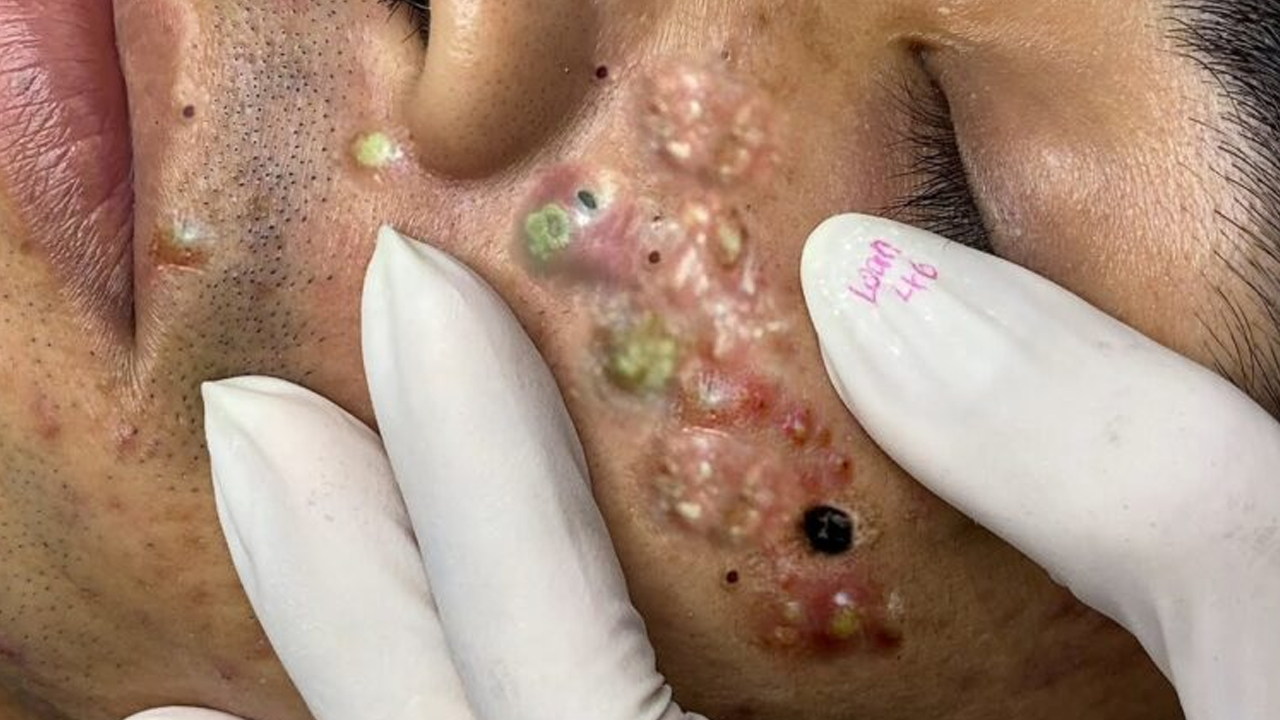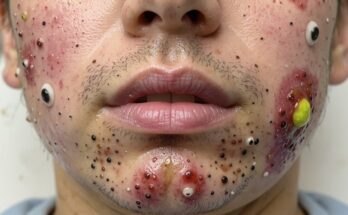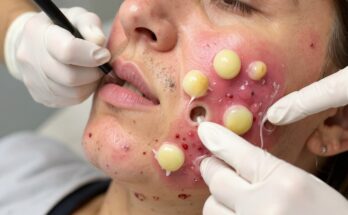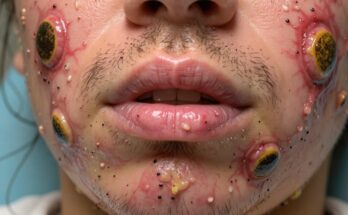Understanding and Tackling Acne: A Comprehensive Guide
Acne, a common skin condition, affects millions. Understanding its various forms and treatment options is crucial for effective management. This guide breaks down the different types of acne, their causes, and the best approaches to clear skin.
Types of Acne and Their Treatments
Acne manifests in various forms, each requiring a tailored approach.
1. Mild Acne: The Whiteheads and Blackheads
Mild acne typically presents as small, white (closed comedones) or black (open comedones) pimples. Breakouts are usually infrequent and localized. Effective treatment often involves over-the-counter (OTC) solutions.
- Treatment: Gentle cleansing twice daily with a non-comedogenic cleanser is paramount. OTC products containing salicylic acid or benzoyl peroxide can effectively target the acne-causing bacteria and unclog pores. Regular, gentle exfoliation helps remove dead skin cells, further preventing pore blockage. Topical retinoids like adapalene prevent future breakouts by promoting cell turnover.
2. Moderate Acne: When Inflammation Sets In
Moderate acne involves inflamed pimples, often appearing as pustules (pus-filled) or papules (red, swollen bumps). Redness and irritation are more pronounced than in mild acne. Treatment steps up a notch from OTC solutions.
- Treatment: Higher concentrations of benzoyl peroxide and salicylic acid can be more effective. Topical antibiotics, such as clindamycin, combat bacterial overgrowth and reduce inflammation. If topical treatments prove insufficient, a dermatologist may prescribe oral antibiotics like tetracycline, doxycycline, or minocycline. For women, hormonal imbalances may contribute to acne, and birth control pills can sometimes regulate hormone levels and improve skin clarity. Retinoids, both topical and oral, remain powerful tools to fight inflammation and unclog pores.
3. Severe Acne (Cystic Acne): A Serious Case
Severe, or cystic, acne involves large, painful cysts and nodules deep within the skin. This persistent form often leads to scarring. Aggressive treatment is necessary.
- Treatment: Oral isotretinoin (Accutane) is often the most effective solution for severe cystic acne, significantly reducing oil production and inflammation. However, it comes with potential side effects, requiring careful monitoring by a dermatologist. Oral antibiotics can help manage inflammation and bacteria while awaiting the full effects of more aggressive treatment. Steroid injections directly into the cysts can reduce their size and hasten healing. In some cases, a dermatologist may perform drainage or extraction of large cysts.
4. Hormonal Acne: A Hormonal Rollercoaster
Hormonal acne frequently affects women, particularly during puberty, menstruation, pregnancy, or conditions like polycystic ovary syndrome (PCOS). Breakouts tend to cluster along the jawline, chin, and lower cheeks.
- Treatment: Oral contraceptives can effectively regulate hormones and reduce acne in many women. Spironolactone, a medication that blocks male hormones (androgens), is another effective option. However, topical treatments like benzoyl peroxide, salicylic acid, and retinoids remain valuable tools. Lifestyle changes, such as stress management and dietary adjustments, can also play a supporting role.
Addressing Acne Scars and Other Complications
Acne can leave behind lasting marks.
5. Acne Scarring: Repairing the Damage
Acne scars result from inflammatory damage to the skin. They can be atrophic (pitted) or hypertrophic (raised). Various treatments can improve their appearance.
- Treatment: Laser treatments, such as fractional lasers, stimulate collagen production, improving scar appearance. Microneedling promotes skin healing and reduces scar visibility. Chemical peels and dermabrasion can refine skin texture. Topical retinoids stimulate skin regeneration, while silicone gel helps with raised scars. Fillers provide temporary improvement for deeper scars.
6. Back and Body Acne: Beyond the Face
Acne isn’t limited to the face; it often affects the back, shoulders, chest, and other areas rich in sebaceous glands.
- Treatment: Body washes containing benzoyl peroxide or salicylic acid effectively combat body acne. For more severe cases, oral antibiotics might be necessary. Wearing loose clothing and maintaining good hygiene (showering after exercise) can prevent flare-ups.
7. Post-Inflammatory Hyperpigmentation (PIH): Dark Spot Removal
PIH refers to dark spots left after acne heals, particularly prevalent in darker skin tones.
- Treatment: Topical retinoids, vitamin C, and niacinamide lighten hyperpigmented areas. Chemical peels or laser treatments can accelerate fading.
8. Comedonal Acne: A Focus on Clogged Pores
Comedonal acne involves primarily non-inflammatory blackheads and whiteheads, with minimal redness or swelling.
- Treatment: Topical retinoids (tretinoin or adapalene) prevent clogged pores. Exfoliation removes dead skin cells. Salicylic acid penetrates pores to break down oil and dead skin buildup.
The Underlying Causes of Acne
Understanding the root causes of acne is crucial for effective treatment.
The key culprits include excess oil production, clogged pores, bacteria (Propionibacterium acnes), hormonal changes, diet, stress, genetics, environmental factors, medications, and poor skincare habits. Addressing these underlying issues, in conjunction with targeted treatments, is key to clear, healthy skin. Remember to consult a dermatologist for personalized advice and treatment plans.



